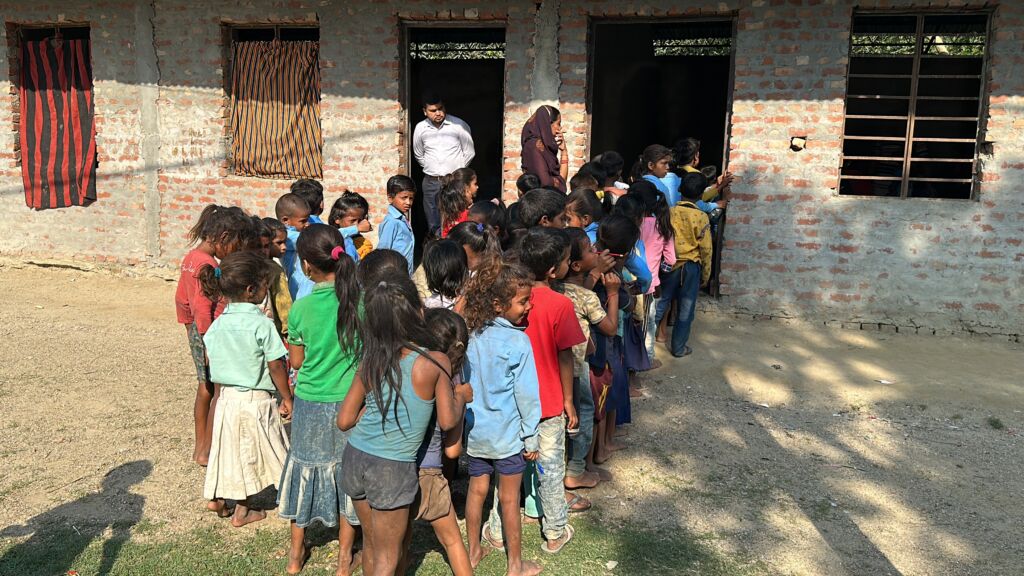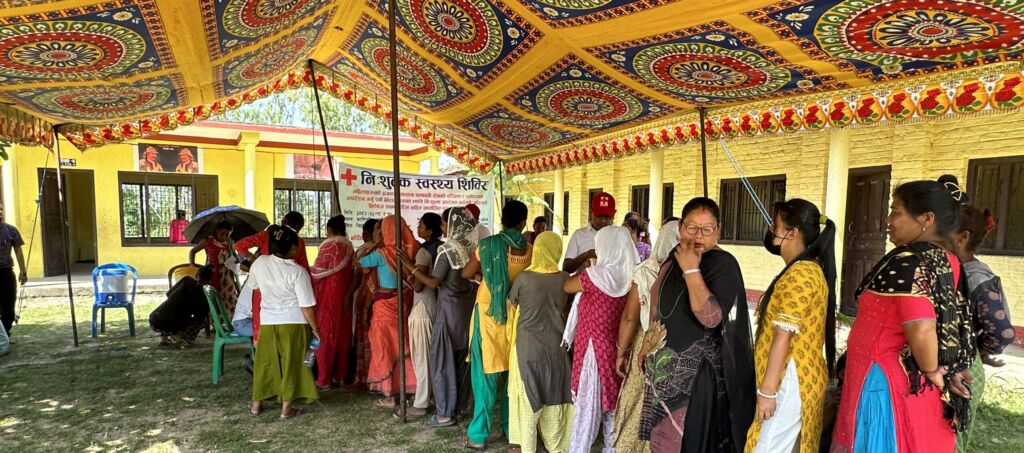
Asian Aid’s women’s and children’s health clinics are usually run in remote, hilly regions, where access to medical help is quite rare. The team is usually not very optimistic in terms of the number of ladies that would participate in these health camps as they belong to a very conservative groups of people but are always pleasantly surprised. The women leave behind their chores and spend the day traveling, consulting with doctors, getting their screening for cervical cancer and pelvic organ prolapse, taking a break from their routine of being mothers, housewives and sisters-in law – showing care and concern for their own self and their health too.
The planning of the health camp begins with meetings with various levels of stakeholders, healthcare workers and local leaders, identifying the venue and the health status of the ladies. Any duplication of the health screening is avoided in a particular ward to make the most efficient use of the screening camps. A meeting is held with the ward chairperson and the local health in charge. The other health workers including the Female Community Health Volunteers (FCHV) and the Auxiliary Nurse Midwife (ANM) are oriented on the program and are mobilized to reach out to the ladies in their villages to encourage maximum participation and identification of the ladies suffering from reproductive health issues. The field workers from our partner go around the village advertising about the upcoming health camp a few weeks before the actual camp. The advertisement is done by ‘micing’ in a vehicle around the village and distributing pamphlets to the ladies in their respective houses and fields.

The local nurses play a very vital role in helping the team to connect and communicate with the ladies in the village. They are educated, live in the village, speak the local dialect fluently and know the ladies in the village, accompanying them during the health camps, coordinating travel for surgery and keeping close eye on them after the surgery.
There is a lot of preparation and planning before conducting the actual health camp so that there is help and cooperation from the community as well as good participation from the women to maximize the beneficiaries to be able to make an impact on the lives of these ladies.
Impact of the health camps and awareness sessions:
955 GIRLS AND YOUNG MOTHERS ACCESSED REPRODUCTIVE HEALTH CLINICS
It is common for girls in our project communities to require help with menstrual concerns. With help from our partners, 524 girls attended adolescent sexual reproductive health services relevant to their age; 431 women in our project communities attended regular antenatal check-ups during pregnancy; and 397 women chose to give birth safely in birthing centres rather than at home. An increasing number of new mothers were also cared for by their families, with time allowed for adequate rest and recovery before resuming household duties, reducing their likelihood of developing pelvic organ prolapse.
44 WOMEN RECEIVED NEONATAL KITS
Partner staff visit new mothers in their project areas, providing them with neonatal kits as well as guidance and support in looking after their newborns, ensuring that the babies are healthy and well cared for.
6,530 CHILDREN TREATED THROUGH SCHOOL HEALTH CAMPS
Children received treatment for anaemia, malnutrition, ear infections, rheumatic heart disease, poor personal and dental hygiene and childhood eye diseases and conditions at 12 child-focused health camps in project schools. Children also received medicines, iron and calcium supplements, prescription glasses and referrals to local healthcare facilities, as needed. Children and school staff also attended information sessions on healthy diets and the importance of eating nutritious foods available in their local villages.
19 SCHOOLS ENGAGED IN REPRODUCTIVE HEALTH AWARENESS
Classroom-led awareness sessions on sexual reproductive health help sponsored students and their peers to learn about health concerns for adolescents and include information for caregivers on signs of and preventative measures for pelvic organ prolapse and cervical cancer. The sessions encourage the children to be sensitive to and supportive of their classmates and help them understand why schools need to be safe spaces for girls to attend.
540 WOMEN AND GIRLS ABANDONED MENSTRUAL HUTS
Awareness programs with women, adolescent girls and their families in our project communities led to the abandonment of chhaupadis; the huts used for isolation during menstruation. As a result, supported by their families, the women and girls can now stay safely in their homes and attend school during menstruation.
97% OF GIRLS ATTENDED SCHOOL DURING MONTHLY PERIOD
Girl-friendly toilet facilities, complete with sanitary products and disposal facilities, were made available in all Asian Aid project schools. As a result, secondary schools saw an average 14% increase in the attendance of girls throughout the academic year – with girls showing increased interest and commitment to their studies.